NVIDIA GeForce RTX 4090 FE Compute Benchmarks
It has been several years since we have done a desktop graphics card review. As a result, many of the benchmarks we used before have been updated to newer versions, no longer exist, or require a new license. We wanted to see the progression of the older benchmarks but also update to a more modern test suite.
This is the start of our new 2023 GPU Benchmarks and how we will continue. We do have a few more to include, but these are not ready yet. Still, we wanted to include the results that we could.
Geekbench 5 and 6
Geekbench 5 and 6 measure the compute performance of your GPU using image processing computer vision to number crunching.
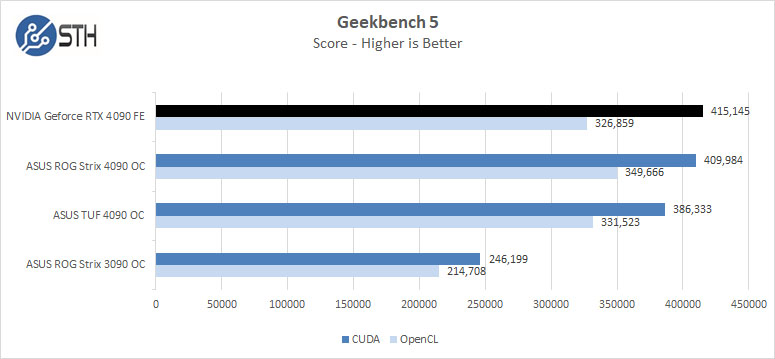
Geekbench 6 was just released a few days before penning this review. It does not include CUDA benchmarks which I hope they bring back. Instead, they use OpenCL and Vulkan.
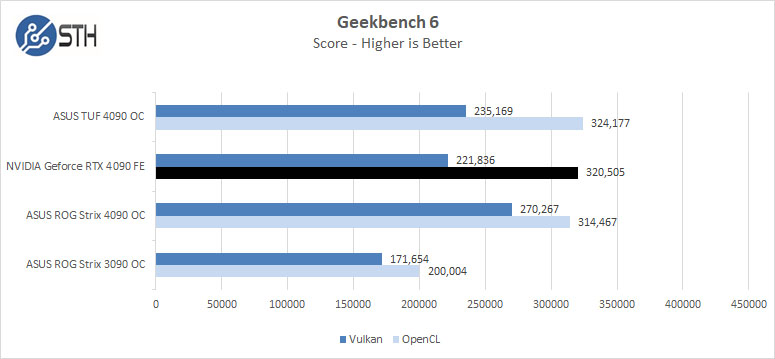
These benchmarks show the three Geforce RTX 4090’s trading blows between Geekbench 5 and 6.
LuxMark
LuxMark is an OpenCL benchmark tool based on LuxRender.
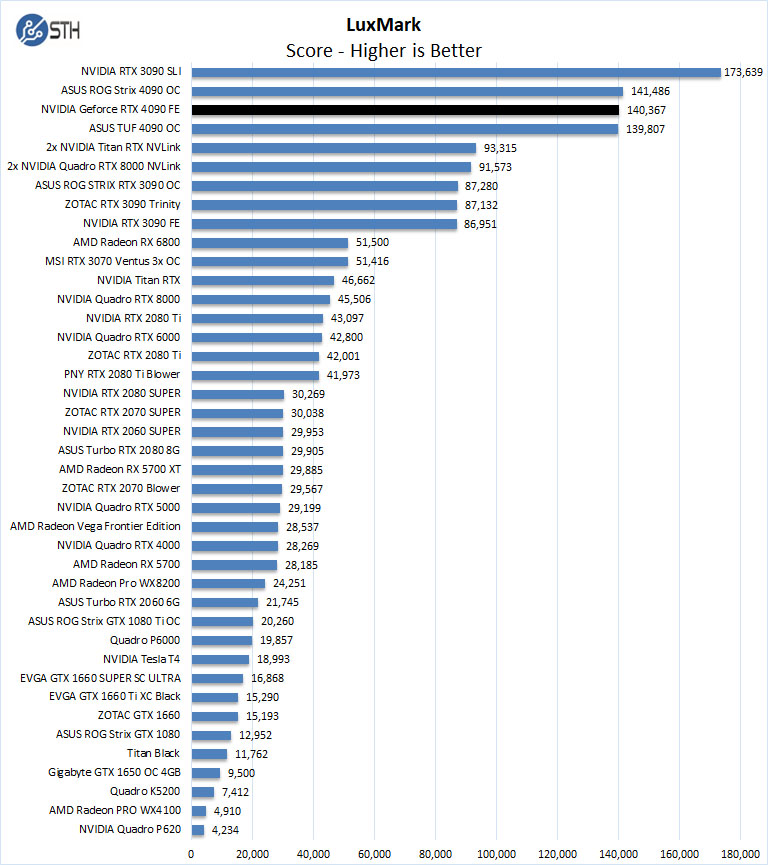
All 3 GPUs are neck and neck in LuxMark.
AIDA64 GPGPU
These benchmarks are designed to measure GPGPU computing performance via different OpenCL workloads.
- Single-Precision FLOPS: Measures the classic MAD (Multiply-Addition) performance of the GPU, otherwise known as FLOPS (Floating-Point Operations Per Second), with single-precision (32-bit, “float”) floating-point data.
- Double-Precision FLOPS: Measures the classic MAD (Multiply-Addition) performance of the GPU, otherwise known as FLOPS (Floating-Point Operations Per Second), with double-precision (64-bit, “double”) floating-point data.
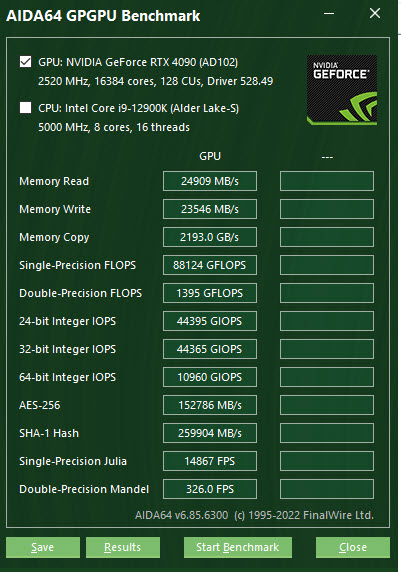
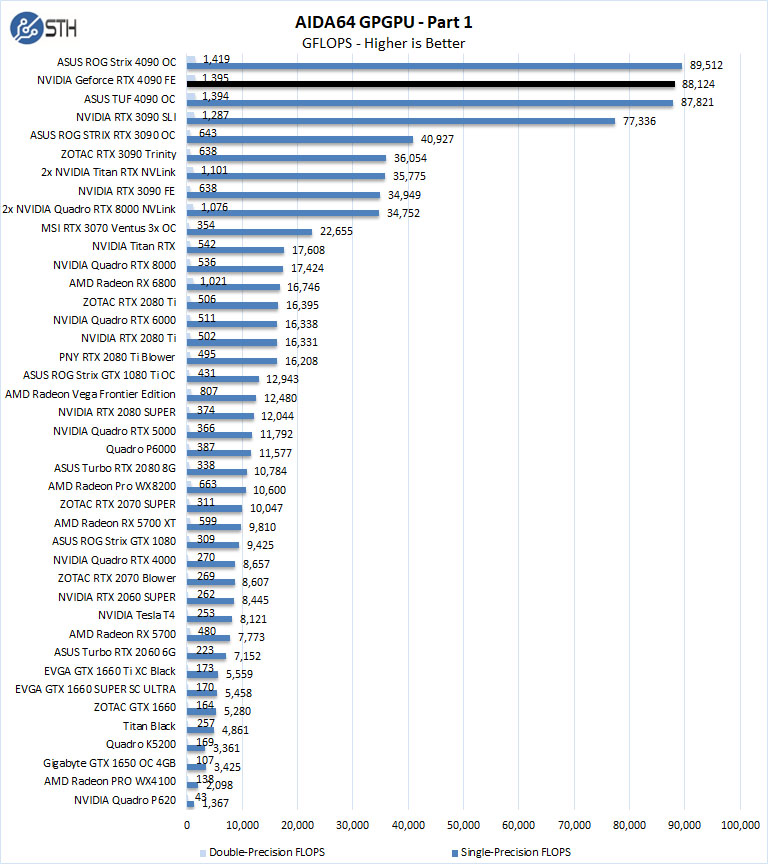
The next set of benchmarks from AIDA64 are:
- 24-bit Integer IOPS: Measures the classic MAD (Multiply-Addition) performance of the GPU, otherwise known as IOPS (Integer Operations Per Second), with 24-bit integer (“int24”) data. This particular data type defined in OpenCL on the basis that many GPUs are capable of executing int24 operations via their floating-point units.
- 32-bit Integer IOPS: Measures the classic MAD (Multiply-Addition) performance of the GPU, otherwise known as IOPS (Integer Operations Per Second), with 32-bit integer (“int”) data.
- 64-bit Integer IOPS: Measures the classic MAD (Multiply-Addition) performance of the GPU, otherwise known as IOPS (Integer Operations Per Second), with 64-bit integer (“long”) data. Most GPUs do not have dedicated execution resources for 64-bit integer operations, so instead, they emulate the 64-bit integer operations via existing 32-bit integer execution units.
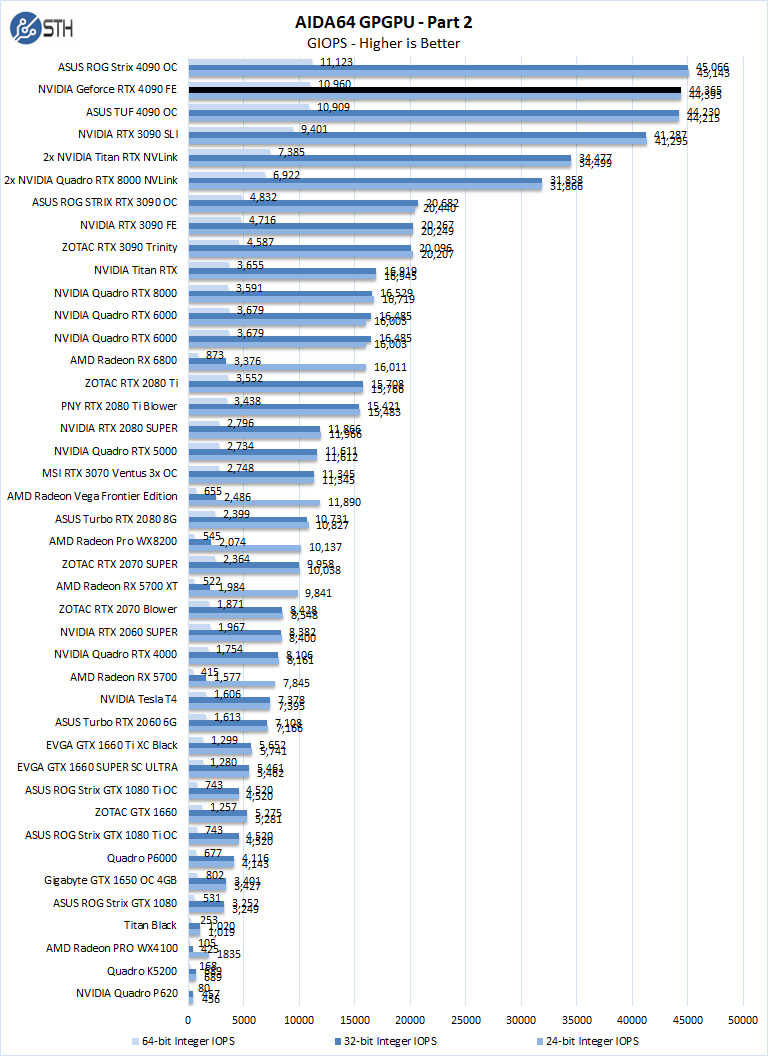
Again, these cards are neck and neck with a slight lead with the Strix version.
hashcat64
hashcat64 is a password-cracking benchmark that can run many different algorithms. We used the windows version and a simple command of hashcat64 -b. Out of these results, we used five results in the graph.
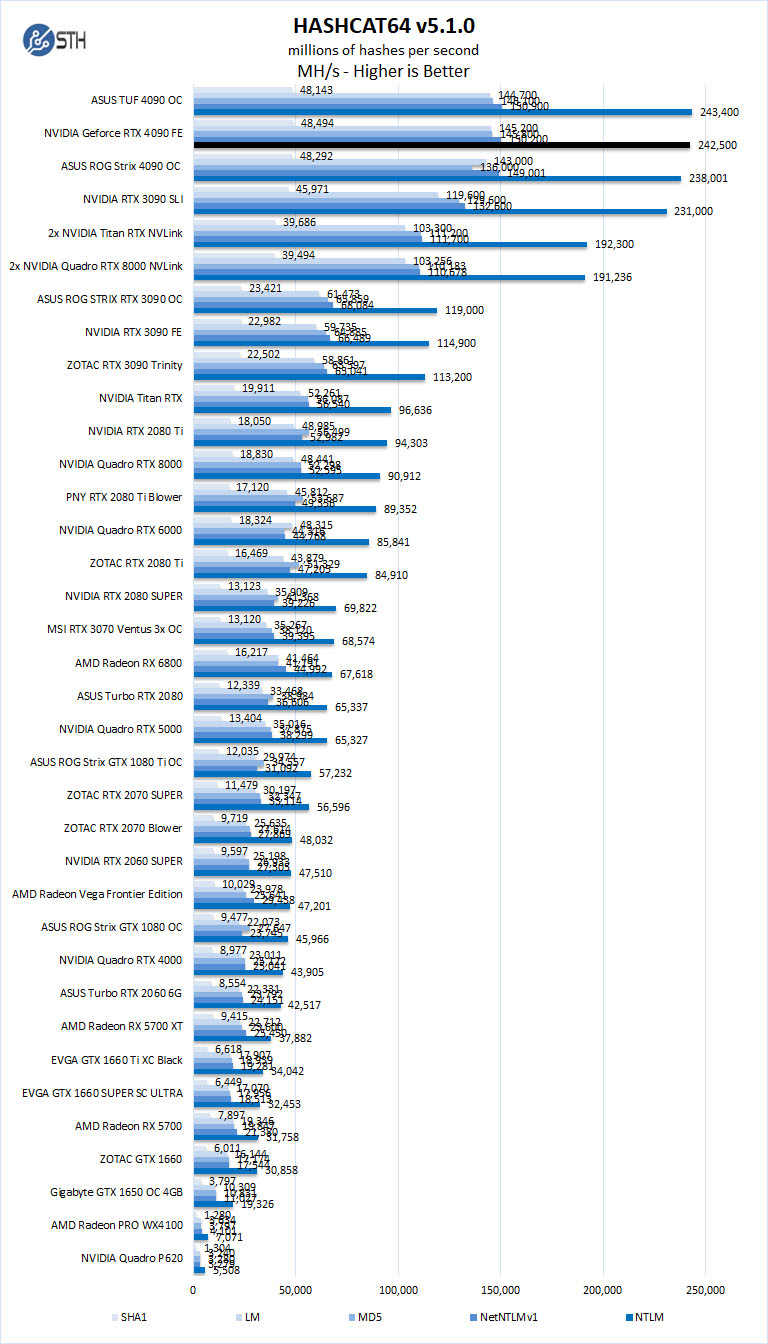
With HASHCAT64 the TUF takes a slight lead. But all 3 GPUs are very close.
GPUPI
GPUPI calculates the mathematical constant Pi in parallel by using the BPP formula and optimizing it for OpenCL and CUDA-capable devices like graphics cards and main processors.
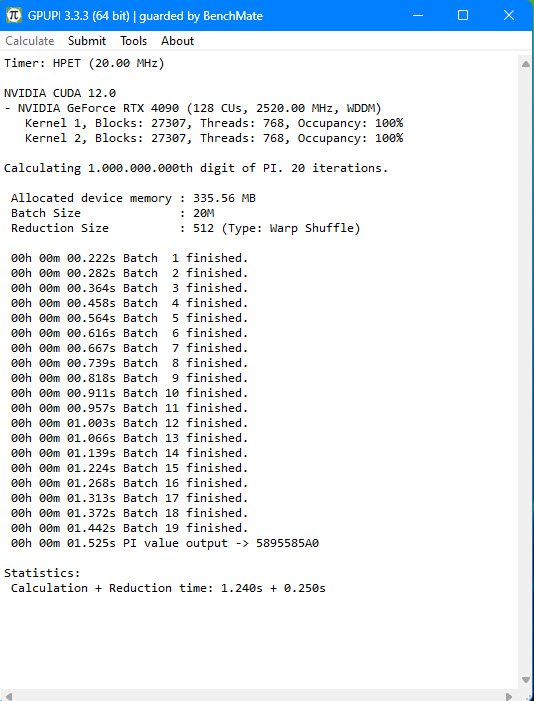
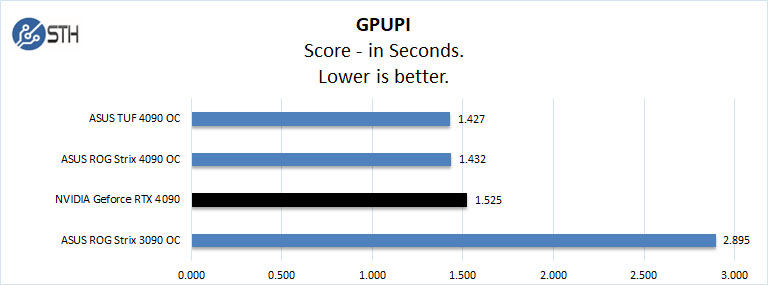
The NVIDIA GeForce RTX 4090 FE completes this task in 1.525 seconds.
Next, we will look at SPECviewperf 2020 performance tests.




So the side with the GPU and most VRAM is the bottom of the card? Never thought of it that way, and can really only see it from an ATX point of view.